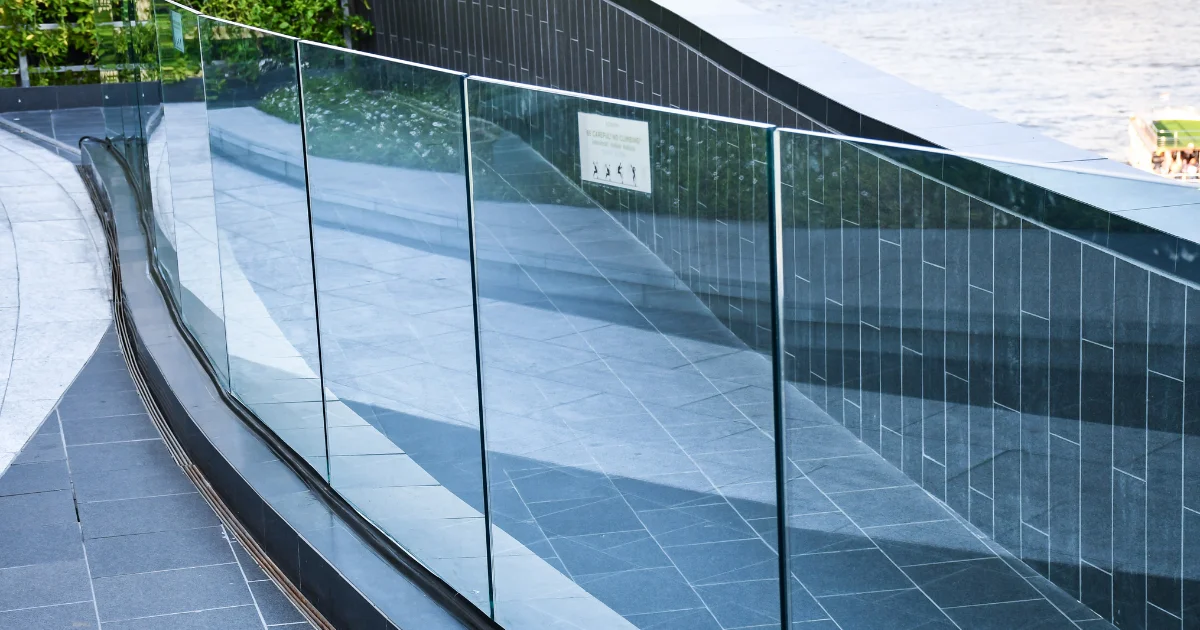When it comes to ensuring safety and durability, tempered glass stands head and shoulders above the rest. As one of the most trusted materials in the construction industry, tempered glass offers unparalleled strength and resistance to breakage. Unlike traditional glass, which can be fragile and prone to shattering into dangerous shards, tempered glass undergoes a special manufacturing process that enhances its structural integrity.
Tempered glass is created by heating regular glass to extremely high temperatures and then rapidly cooling it. This process, known as tempering, results in a glass that is up to five times stronger than regular glass. The key to its strength lies in the controlled cooling, which creates internal stresses within the glass. This makes the glass highly resistant to impact, making it an ideal choice for applications where safety is paramount.
In the event that tempered glass does break, it does so in a unique way. Instead of shattering into sharp, jagged pieces like regular glass, tempered glass fractures into small, relatively harmless pieces known as granules. These granules are much less likely to cause injury, as they have rounded edges and lack the sharpness of traditional glass shards. This controlled breakage is a crucial safety feature of tempered glass, making it an ideal choice for environments where accidents are more likely to occur.
Safety in Shattering: Understanding Controlled Breakage in Tempered Glass
The controlled breakage of tempered glass is a fascinating phenomenon that plays a crucial role in its safety features. When tempered glass is subjected to excessive force or impact, it fractures in a way that is vastly different from regular glass. This controlled shattering is a result of the internal stresses created during the tempering process.
When a piece of tempered glass is broken, the internal stresses cause the glass to break into small, relatively harmless pieces. These granules are much safer than the sharp shards that regular glass produces when broken. The rounded edges of the granules minimize the risk of cuts and punctures, making tempered glass an excellent choice for applications where safety is a top priority.
The controlled breakage of tempered glass also reduces the risk of injury during installation or maintenance. In the event that tempered glass needs to be replaced or repaired, the controlled shattering ensures that the glass can be removed and handled safely. This is particularly important in environments where glass breakage is more likely, such as commercial buildings or public spaces.
Must Read: Qualities and Skills Every Construction Safety Manager Should Have
Code Compliance: How Tempered Glass Meets and Exceeds Safety Standards
When it comes to safety, tempered glass goes above and beyond the minimum requirements set by safety standards. In many jurisdictions, building codes mandate the use of tempered glass in specific applications to ensure the safety of occupants. For example, tempered glass is required in areas where there is a higher risk of impact, such as doors, windows close to the floor, and shower enclosures.
Tempered glass manufacturers understand the importance of code compliance and design their products to meet and exceed the necessary safety standards. By adhering to rigorous manufacturing processes and quality control measures, tempered glass manufacturers ensure that their products consistently meet the highest safety standards.
In addition to code compliance, tempered glass is also tested for its resistance to temperature changes. This is particularly important in applications where the glass is exposed to extreme temperature variations, such as glass facades or skylights. Tempered glass is designed to withstand these temperature fluctuations without compromising its structural integrity, further enhancing its safety features.
Childproofing Spaces: The Importance of Tempered Glass in Safety-conscious Environments
Childproofing spaces is a top priority for parents and caregivers, and tempered glass plays a vital role in creating safe environments for children. From residential homes to daycare centers and schools, tempered glass provides an added layer of protection against accidents and injuries.
One of the key advantages of tempered glass in childproofing is its resistance to breakage. Children are naturally curious and prone to accidents, so having a glass that can withstand their playful interactions is essential. Tempered glass’s strength and ability to resist impact significantly reduce the risk of glass breakage, keeping children safe from the potential harm caused by broken glass.
Furthermore, the controlled breakage of tempered glass ensures that even if it does break, the risk of severe injury is minimized. The granules produced by tempered glass fractures are much safer for children, as they lack the sharp edges that can cause deep cuts or punctures. This makes tempered glass an excellent choice for windows, doors, and other glass surfaces in child-friendly spaces.
Also Read: Modern Innovations in Security Camera Technology
Conclusion
Tempered glass is the epitome of safety in the glass industry. Its unyielding strength, controlled breakage, code compliance, and childproofing capabilities make it an indispensable choice for applications where safety is paramount.
As tempered glass manufacturers continue to innovate and improve their products, we can rest assured that our buildings and spaces will be equipped with the highest level of safety and durability.





